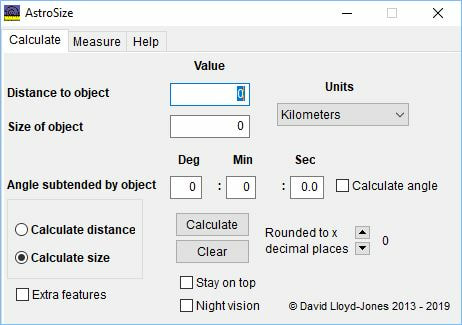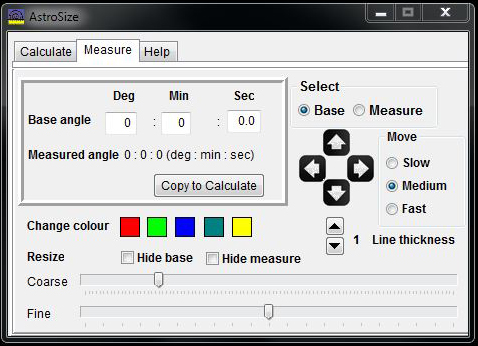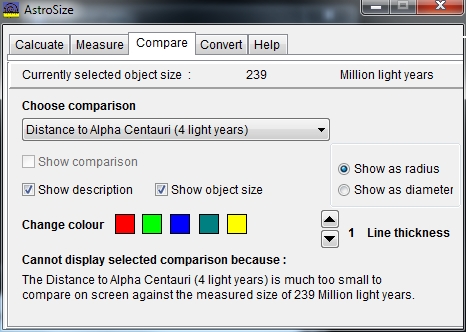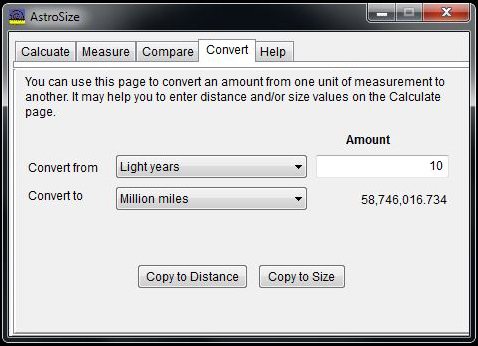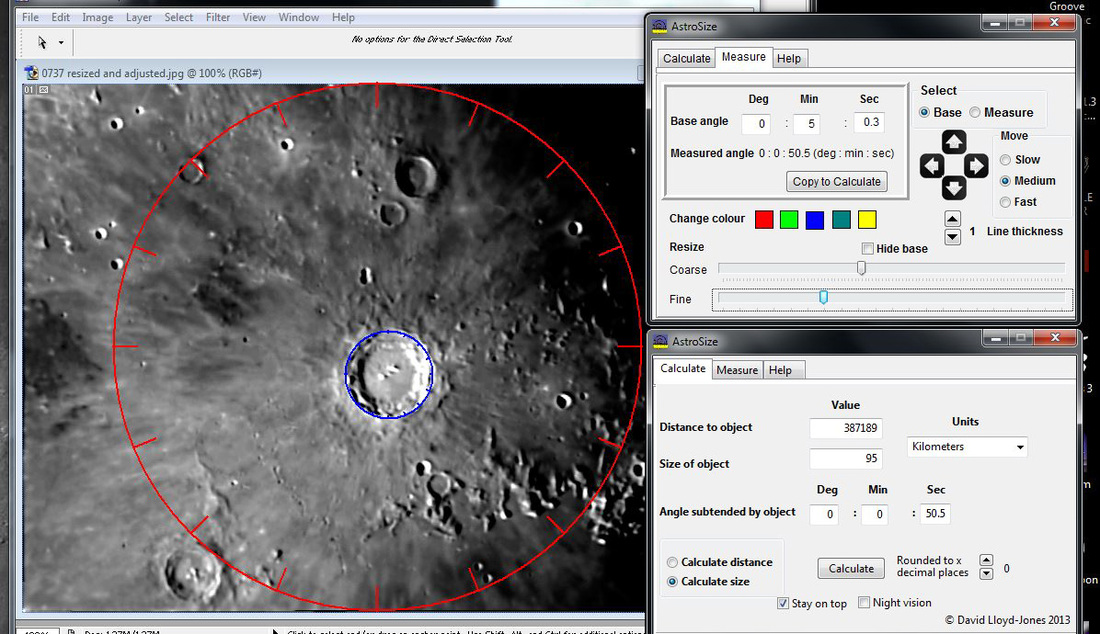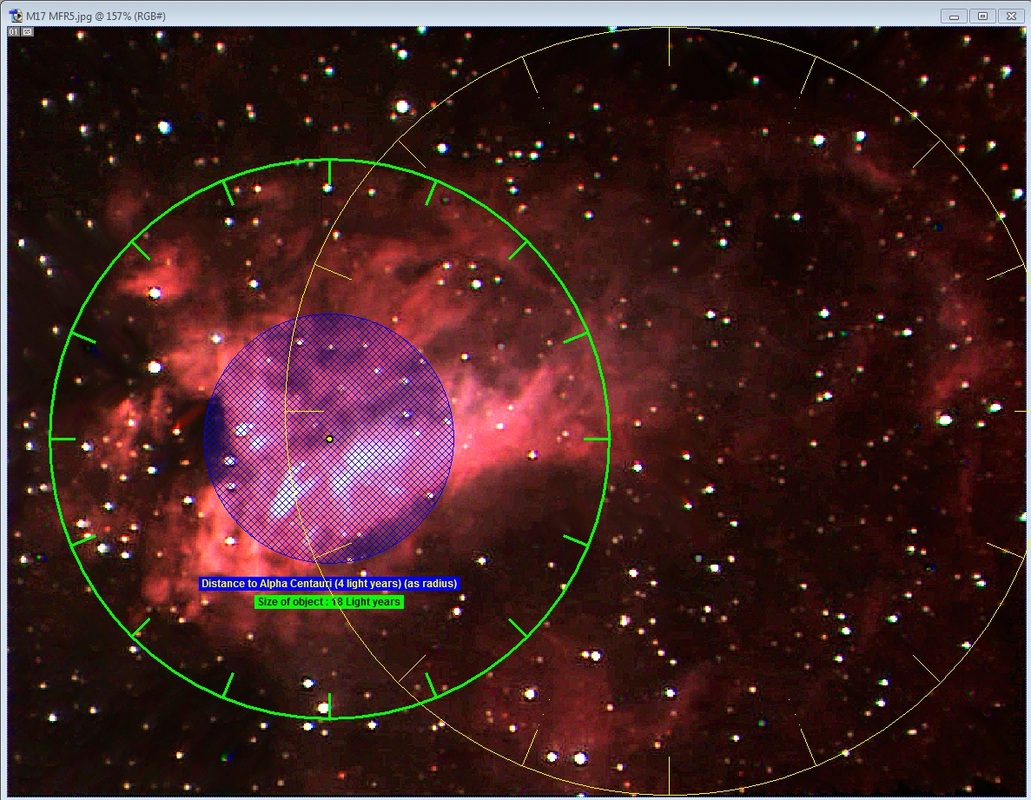Although this little program has a number of functions its main use is probably to let you measure the actual size of any object that you view in an on-screen image that you have taken yourself or in the on-screen display of your imaging camera's output. Most reference sources quote the distance to an astronomical object (albeit with varying accuracy) but only some quote the object's size. And even when they do it is usually expressed as an angle of arc rather than a linear measurement (such as so many light years across). This program lets you measure an object's angle of arc directly from your image / camera display and when you then supply the distance to the object the program calculates the object's linear size. Once that is done you can ask the program to also display the size of a comparison object that you may be more familiar with. This allows you to better appreciate the true size of the measured object.
Measure page
The Measure page lets you control the movement and size of two circles over the displayed image / camera display. One circle, the Base circle, is used to define a known angular size such as the vertical height of the image / camera display. The other circle, the Measure circle, is then positioned and sized over the object being measured. The program automatically calculates the angular size of the Measure circle and that size can be automatically transferred to the Calculate page and used in conjunction with the known distance to the object to calculate its linear size.
During a public outreach session using your camera's live feed (and provided that you do not change the size of the camera's field of view) once the Base circle has been set it can be hidden from view . This lets you display, as needed, only the Measure circle when moving from one object to the next. |
Compare page
The Compare page lets you choose and display a third hatched circle representing the size of a comparison object to better appreciate the true size of the measured object. A list of 9 comparison objects is provided ranging in size. The smallest is the length of the Olympic Marathon – useful for comparing with lunar craters, etc. The largest is the size of our local group of galaxies.
|
Examples
|
Measuring Copernicus when the Moon is 387,189 kilometers distant. The red Base circle spans the known height of the image - 5 minutes 0.3 seconds of arc. The program determines that the blue Measure circle spans 50.5 seconds of arc and translates that into a linear size of 95 kilometers.
|
The green measure circle indicates that the size of the brightest part of M17 is 18 light years across. The blue comparison circle has a radius of 4 light years representing the distance to our nearest star system Alpha Centauri.
|
Help file
|
The program is accompanied by a reasonably comprehensive HTML help file in .chm format This tutorial will display if you have Flash Player installed on your computer. It is quite large and may take some time to activate. Please be patient and wait until your web browser indicates that it is ready for use. If you find that it is not responding to your mouse click try first clicking the left-hand arrow button on the button bar at the bottom of the screen. |

